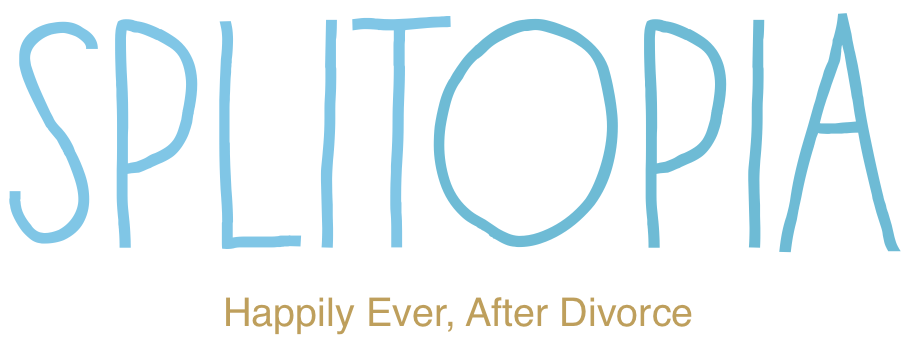Writing Your Way Through Divorce
/Tired. Angry. Overwhelmed.
Excited. Elated.
Sad. Frustrated. Enraged.
Giddy . . . Out of Control.
Most of us feel of all of these emotions around divorce, often in one day. The flood of feelings can be overwhelming. How to gain control? Try starting a regular writing practice. Creating writing can be a wonderful way not only to manage shifting emotions, but also to move through them twice as quickly, and become “unstuck.”
Writing gives us more distance from our inner story, and more perspective. And as with traditional therapy, it helps us shift our inner energy, and feel heard and understood.
You do not have to be an excellent wordsmith for expressive writing to help you through divorce.
No matter how well you did (or didn’t do) in English class, writing helps you connect more deeply to your emotions, gain more perspective and arrive at more wisdom and insight.
Ready to get started? Grab a pen or pencil (or laptop), and try these steps:
1. Consider your journal a “therapy assistant.”
Our emotions get bottled up within us. When we talk them through, they become unstuck. This is the premise of talk therapy, and many people turn to therapy during tough transitions such as divorce. But one hour a week with a therapist, who may cost hundreds of dollars, is often not enough. Writing regularly can help you move through difficult emotions much more quickly than therapy alone—and more quickly than ignoring your feelings or ruminating about the same problems again and again.
Keep a journal, and even if you’re in therapy, consider it your therapist’s assistant. Write about how you’re feeling. Often, through the process of writing, those things that you feel you need to work through in therapy don’t seem as pressing by the time you get to your session, allowing you to use that hour for something else. Or maybe you don’t even need that hour. I’m not suggesting using writing instead of therapy, but it can be a wonderful supplement.
2. Answer the hard questions on the page.
Writing can help you go more deeply into your immediate emotions and patterns—and the root causes of them. When we’re in therapy or with friends, we often stay on the surface, focusing on the immediately pressing problems. But writing lets us take more time to ask ourselves and to explore more deeply larger questions.
Try asking yourself specific questions, and answering them in your journal, on the computer or in a notebook you’ve dedicated to writing your way through your break-up. Here are some to get you started:
- Have I seen this or felt this before in my life? What got me into this pattern?
- Are there ways in which I’m stuck in old patterns that I can shift?
- How does this situation fit into my larger life pattern?
- When have I felt this way in other situations?
It’s amazing how asking questions and trying to answer them on the page can cut through years of misperception and help us see ourselves more clearly. Answer these questions, and then come back to them, in a few months, and answer them again. Seeing your own progress on the page can be incredibly encouraging. If your answers haven’t changed, that can be good information for you.
3. Use writing to reframe your challenge as a heroic struggle leading to triumph.
Often when we’re in the middle of a divorce—or any challenging life transition—it is easy to focus on the negative. We can criticize ourselves for being in challenging situations. But the hero’s journey in every culture is one of overcoming challenges. See how you can reframe your challenges as character-building struggles, times when you’ve drawn on strength, determination and wisdom, outsized challenges culminating in a heroic, triumphant tale.
Try writing a two-page overview of your story, reframed in this way, a tale of overcoming obstacles and gaining more insight and clarity. Then try writing a five- or ten-page version.
In one workshop I led, a recently divorced woman continually shared her story as one of failure; she had failed to create the loving marriage she wanted. But when she tried this heroic reframing exercise, she realized that separating from her husband was actually the first time she’d faced the reality of her unhappy situation honestly—which took huge courage. She was acting from a place of reality acknowledgment. She retold her story as one of moving from the illusions she had created after growing up in an alcoholic family, to the maturity of a woman able to see clearly her own life situation, something she had always wished her own mother would do.
These writing strategies and exercises can help you gain a sense of control over your emotional life, and shift your relationship to your own story. As you write through the painful parts of the transition of divorce, you can appreciate the growth that comes from this big life change.
***
Nadia Colburn brings together mindfulness, writing and yoga in her online class, Align Your Story, and she works as a coach for women in transition. Her writing has appeared in The New Yorker, slate.com, The Boston Globe Magazine, and other places. She is a founding editor at Anchor Magazine: where spirituality and social justice meet. Nadia holds a PhD in English from Columbia University and a BA from Harvard, and has taught at MIT, Lesley and in workshops around New England. She is also a certified Kundalini yoga teacher and an Order of Being Aspirant in Thich Nhat Hanh's Plum Village tradition. See www.nadiacolburn.com.























